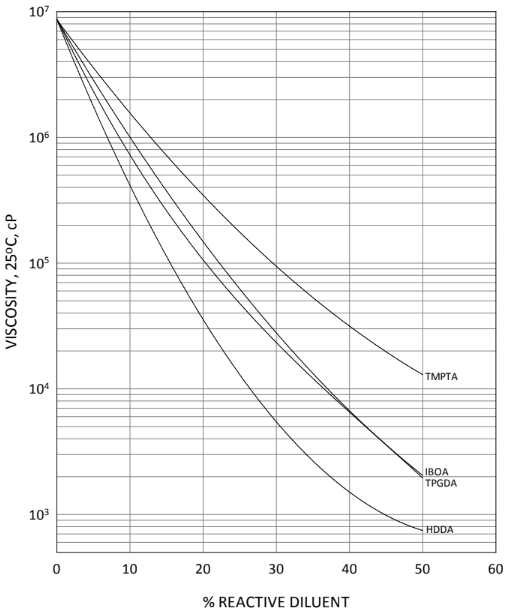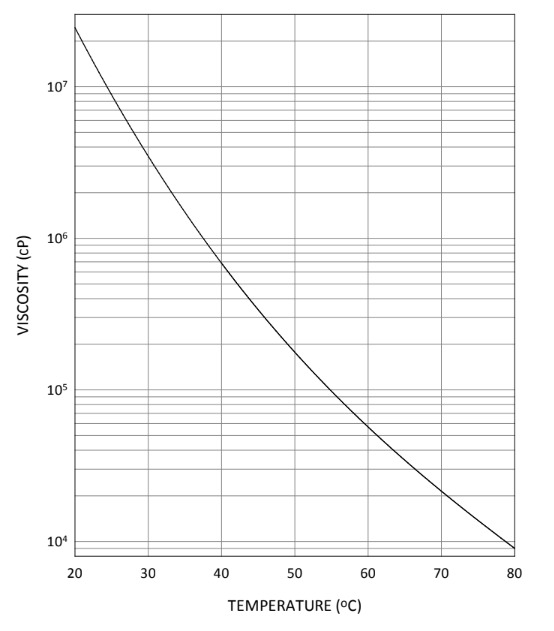Enhanced TDS
Identification & Functionality
- Blend
- No
- CASE Ingredients Functions
- Chemical Family
- Function
- Oligomer, Monomer
- Product Code
- MITM10146
- Single Ingredient
- Yes
- Technologies
- Product Families
Features & Benefits
- CASE Ingredients Features
- Labeling Claims
- Performance Highlights
EBECRYL® 246 is characterized by:
- No intentionally added tin, heavy metals*, or quinones
- Very light color
- Low odor
- High viscosity
UV/EB cured products containing EBECRYL 246 are characterized by the following performance properties:
- Regulation friendly for tin, heavy metals, and quinones
- Good abrasion resistance
- Excellent flexibility
- Exceptional toughness
- Non-yellowing
The actual properties of UV/EB cured products also depend on the selection of other formulation components such as reactive diluents, additives and photoinitiators.
Applications & Uses
- Application Method
- Coating End Applications
- Compatible Substrates & Surfaces
- Cure Method
- Product Applications
Formulated UV/EB curable products containing EBECRYL® 246 may be applied via brush, roller, direct or reverse roll, offset gravure, metering rod, slot die, knife over roll, air knife, curtain, immersion and spin coating methods.
EBECRYL® 246 is recommended for use:
- In applications that must meet regulations for tin, heavy metal, and quinone content
- In abrasion resistant coatings for flexible substrates such as vinyl and other plastics
- In laminating adhesives
- As a modifying oligomer to increase flexibility
- Product Applications
Formulated UV/EB curable products containing EBECRYL 246 may be applied via brush, roller, direct or reverse roll, offset gravure, metering rod, slot die, knife over roll, air knife, curtain, immersion and spin coating methods. EBECRYL 246 is recommended for use:
- In applications that must meet regulations for tin, heavy metal, and quinone content
- In abrasion resistant coatings for flexible substrates such as vinyl and other plastics
- In laminating adhesives
- As a modifying oligomer to increase flexibility
Properties
- Physical Form
Technical Details & Test Data
- Viscosity Reduction
Graph I shows the viscosity reduction of EBECRYL® 246 with 1,6-hexanediol diacrylate (HDDA) product of allnex, isobornyl acrylate (IBOA) product of allnex, trimethylolpropane triacrylate (TMPTA) product of allnex, and tripropylene glycol diacrylate (TPGDA) product of allnex. Although viscosity reduction can be achieved with non-reactive solvents, reactive diluents are preferred because they are essentially 100 percent converted during UV/EB exposure to form a part of the coating or ink, thus reducing solvent emissions. The specific reactive diluents used will influence performance properties such as hardness and flexibility. Graph II illustrates the change in viscosity of EBECRYL® 246 with increasing temperature.
Graph I: Viscosity Reduction with Reactive Diluents

Graph II: Viscosity Vs. Temperature

Packaging & Availability
- Packaging Type
Principal Information
- Group Principal Number
- S000001
- Principal
Other
- Appearance
- Clear liquid
- Appearance (SDS)
- Extremely viscous liquid
- Color (SDS)
- Clear to hazy and straw color
- Item Number
- Odor (SDS)
- Acrylate
- Other Hazards
- Polymerization may occur from excessive heat ,contamination or exposure to direct sunlight , Contact with skin may cause a cross-allergic reaction in persons already sensitized to acrylates.
- Protect from Freezing
- Yes
- Temperature Control
- Yes
- USA/DOT UN Number
- Not Applicable
- Chemical Properties
Value Units Test Method / Conditions Hydroquinone Content 10.0 ppm ppm High Performance Liquid Chromatography (HPLC) Methoxyhydroquinone Content 10.0 ppm ppm High Performance Liquid Chromatography (HPLC) - Mechanical Properties
Value Units Test Method / Conditions Elongation 62.0 % % UV cured, 125 μ thick films Tensile Modulus 19700.0 psi psi UV cured, 125 μ thick films Tensile Strength 3875.0 psi psi UV cured, 125 μ thick films - Optical Properties
Value Units Test Method / Conditions Color Scale max. 2.0 Gardner Gardner Gardner Color Scale - Physical Properties
Value Units Test Method / Conditions Density 1.09 g/mL g/mL At 25°C Glass Transition Temperature (Tg) 54.0 °C °C Dynamic Mechanical Analysis (DMA) UV cured, 125 μ thick films Storage Temperature 39.2-104.0 °F °F Viscosity 58600.0 cPs cPs At 60°C - SDS Physical and Chemical Properties
Value Units Test Method / Conditions Boiling Point (SDS) min. 100.0 °C °C Density (SDS) 1.1 g/cm³ g/cm³ Flash Point (SDS) min. 100.0 °C °C Cleveland Open Cup Solubility In Water (SDS) 10.0 g/L g/L Vapor Pressure (SDS) 0.133 hPa hPa at 20°C Viscosity (SDS) 50000.0-70000.0 mPa.s mPa.s At 60°C Volatile Content (SDS) max. 0.3 %(W/W) %(W/W) - Shelf Life & Stability
Value Units Test Method / Conditions Shelf Life 0.0 d d
